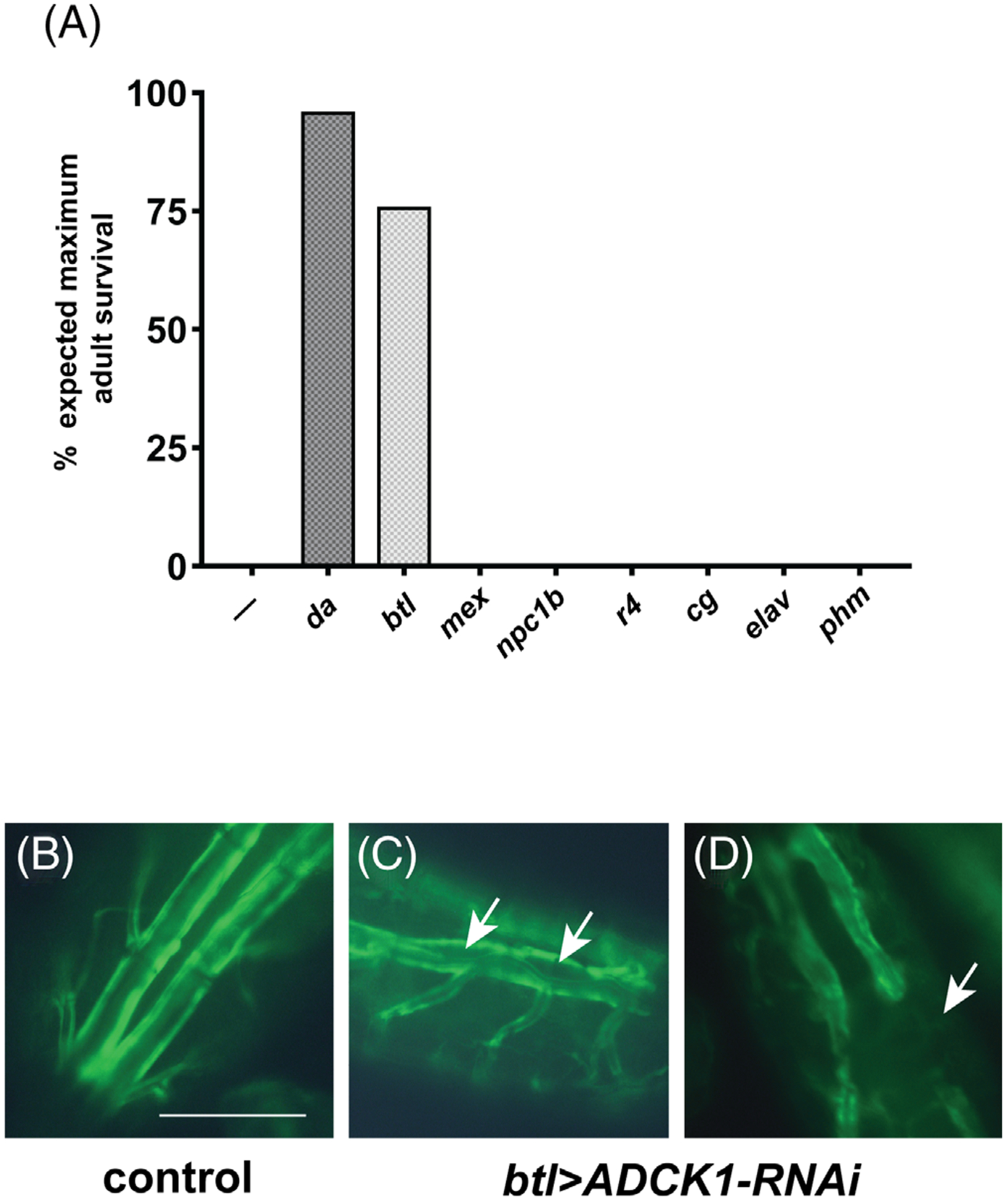FIGURE 3.

ADCK1 acts in the trachea to support larval viability. A, Tissue-specific GAL4 drivers listed on the x-axis were combined with the UAS-ADCK1 transgene in an ADCK1/2 mutant background and scored for adult viability relative to ADCK1 mutants alone (—). The efficiency of rescue is shown as a percentage of adult offspring relative to the expected value for full rescue. n ≥200. Ubiquitous (da-GAL4), fat body (cg-GAL4, r4-GAL4), intestine (mex-GAL4, npc1b-GAL4), neuronal (elav-GAL4), tracheal (btl-GAL4), and prothoracic gland (phm-GAL4) drivers were used. B-D, Dorsal tracheal trunks were imaged from offspring obtained by crossing btl-GAL4, UAS-GFP to either UAS-mCherry RNAi (control, B) or UAS-ADCK1-RNAi (C,D). The arrows mark regions that display either abnormal tracheal morphology (C) or tracheal breaks (D). Scale bar = 0.25 mm
